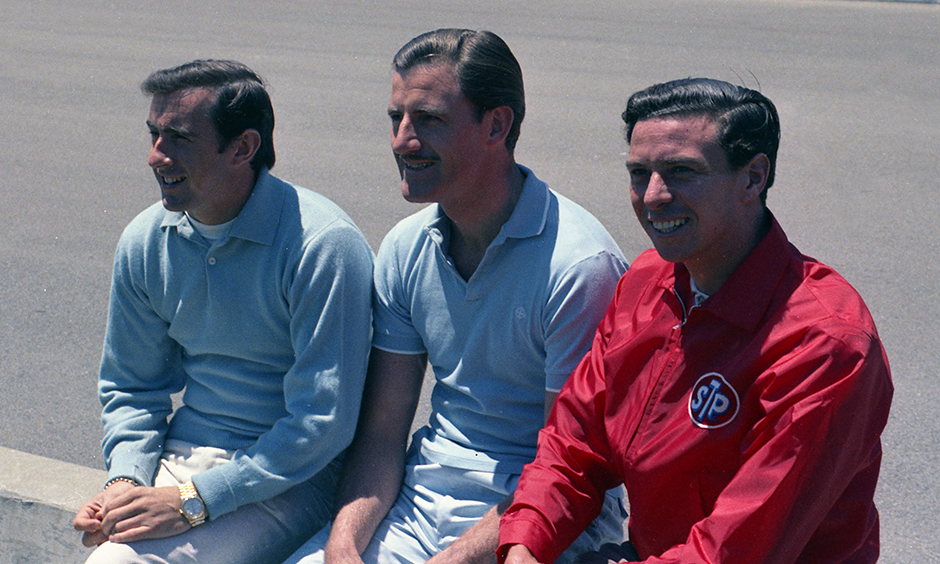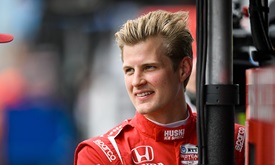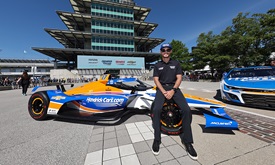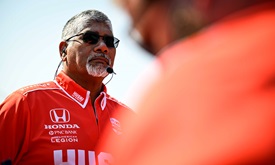Rookie Tests Form Longtime Part of Indianapolis 500 Lore
OCT 10, 2023
Every sport is filled with acronyms, and most NTT INDYCAR SERIES and Indianapolis 500 presented by Gainbridge fans know what ROP means – the initial letters of Rookie Orientation Program, the rookie test for “The Greatest Spectacle in Racing.”
2021 NASCAR Cup Series champion Kyle Larson will participate in ROP on Thursday, Oct. 12 on the Indianapolis Motor Speedway oval as he prepares for the Hendrick 1100, the moniker given to his attempt to become just the fifth driver to race in the Indy 500 and the NASCAR Cup Series Coca-Cola 600 at Charlotte Motor Speedway on the same day. Larson will drive the No. 17 Hendrickcars.com Chevrolet fielded by Arrow McLaren in a joint effort with his NASCAR team, 10-time Brickyard 400 winners Hendrick Motorsports.
Larson’s first-ever laps in an NTT INDYCAR SERIES car Thursday are bound to attract attention around the world. And many NASCAR fans monitoring Larson’s progress may be unfamiliar with the concept of ROP, Indy 500 rookie tests and their history.
Mandatory tests for all new drivers in the Indianapolis 500 started in 1936, 25 years after the inaugural edition of “The Greatest Spectacle in Racing. Before 1936, some drivers unknown or little-known to race organizers were required to pass an on-track rookie test, but many first-year drivers with recognized previous results were not.
Starting in 1936, every first-year “500” driver was required to pass a rookie test after rookie Johnny Hannon suffered fatal injuries in a crash during his first practice run in 1935. Hannon was an experienced dirt-track racer but had no asphalt experience before his fateful first laps at IMS.
From 1936 through today, the rookie tests have consisted of drivers turning laps within certain speed phases to gradually adapt to the high speeds and unique nature of the rectangular, low-banked 2.5-mile oval. There have been as many as five or six speed phases for drivers to complete, with three phases in the current guise of the test.
Larson and fellow “500” rookies Marcus Armstrong, Tom Blomqvist and Linus Lundqvist must start with 10 laps between 205-210 mph, following with 15 laps at 210-215 and finishing with 15 laps faster than 215 mph. Armstrong, Blomqvist and Lundqvist are participating in ROP on Wednesday.
Rookie tests from 1936-80 took place during practice for the Indianapolis 500 in May, when the track was open nearly the entire month. Many rookie drivers took advantage of turning their required laps early in May, when there was less traffic because veteran drivers often waited until later in the month to begin their programs.
In 1981, the Rookie Orientation Program was formalized. The biggest difference between ROP and previous rookie tests was the entire session was reserved for rookies only, with the session taking place sometime in April or early May. Drivers no longer needed to find clear track amid veteran practice to learn the ropes.
There’s one interesting fact about Indy 500 rookie tests and ROP since the test began in 1936 – there are no exceptions. It doesn’t matter if the driver is making their first NTT INDYCAR SERIES start in the “500” or has extensive global racing success and experience. They all must take the test.
Some noteworthy drivers who were established stars before their first Indy 500 start but still required to take a rookie test include existing or eventual Formula One World Champions Alberto Ascari, Juan Manuel Fangio, Jack Brabham, Jim Clark, Graham Hill, Denis Hulme, Jackie Stewart, Jochen Rindt, Emerson Fittipaldi, Nelson Piquet, Nigel Mansell and Fernando Alonso.
Juan Pablo Montoya won the CART title in 1999 but still was required to take ROP before his winning first Indy 500 start in 2000. Jimmie Johnson had won four Brickyard 400 races on the IMS oval in a NASCAR Cup Series car, but he had to pass ROP before making his first Indy 500 start in 2022.
Other NASCAR stars who took the rookie test included Cale Yarborough, Junior Johnson, Neil Bonnett, Bobby Allison, Donnie Allison, Lee Roy Yarbrough, Curtis Turner, Bobby Johns, Paul Goldsmith, Marshall Teague and Kurt Busch.
The Rookie Orientation Program takes place from 10 a.m.-noon and 1-5 p.m. ET Wednesday. Testing of the 2.2-liter twin-turbocharged V-6 engine with hybrid technology starts from 9-11 a.m. Thursday, followed by Larson’s rookie test from 11 a.m.-2 p.m. and more hybrid testing from 2-6 p.m. Hybrid testing will take place from 9 a.m.-noon and 1-5 p.m. Friday. The hybrid power unit will make its NTT INDYCAR SERIES race debut in 2024.
Fans can watch all three days of testing from the grandstands inside the short chute between Turns 1 and 2 of the IMS oval, near the IMS Museum, and the spectator mounds inside Turn 2. Live timing from the Rookie Orientation Program on Wednesday and Thursday will be available at racecontrol.indycar.com.



















